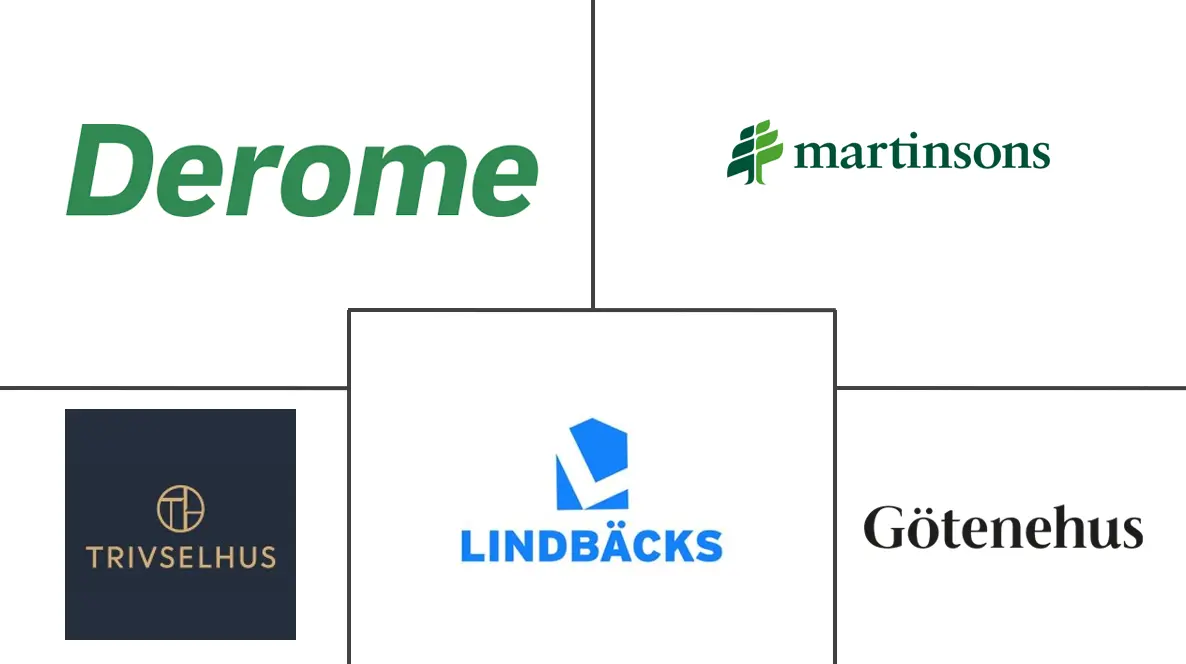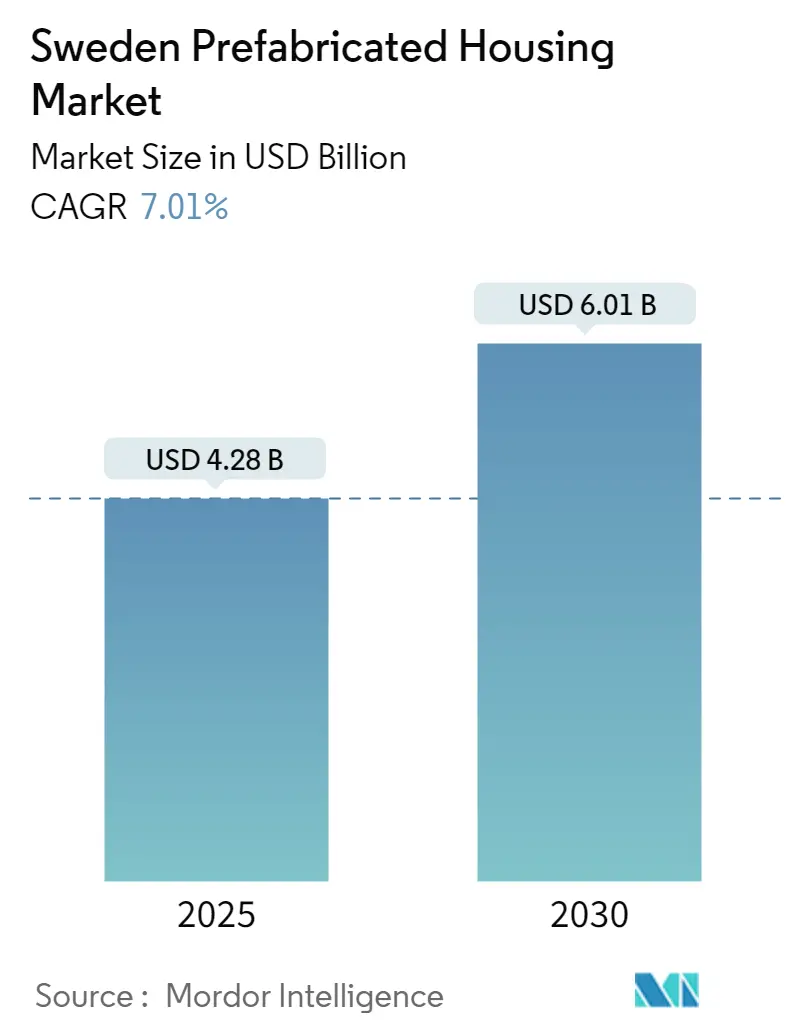
Sweden Prefabricated Housing Market Analysis by Mordor Intelligence
The Sweden Prefabricated Housing Market size is estimated at USD 4.28 billion in 2025, and is expected to reach USD 6.01 billion by 2030, at a CAGR of 7.01% during the forecast period (2025-2030).
- The COVID-19 pandemic in 2020 plunged the global economy into recession and led to declines in prefabricated housing construction in Sweden, as lockdown measures and the need to adjust construction practices to accommodate greater social distancing stopped or slowed projects in the country. Rapid urbanization and the need to overcome housing shortages have provided market space for prefabricated structures.
- The market has some limitations, such as durability issues and a need for appropriate financing options for prefabricated living spaces. Sweden's prefabricated houses are mostly timber-framed, which means they are not radically different from most mid-grade structures design-wise. However, when it comes to production, the process is different from the current industry standard of crews erecting stick-built houses piece by piece. For production, measurements and specifications are planned by computer.
- The demand for low and medium-rise residential buildings, project housing, and public housing drives the market. About 84% of detached houses in Sweden use prefabricated timber elements. Prefabricated metal products are also used to meet modern architectural needs, where the structure of the building has decorative elements with unique shapes. Due to cost-effectiveness and time constraints, the construction sector has an increasing trend to use prefabricated components.
- In 2022, wooden skyscrapers witnessed significant growth in the country. In September 2022, a 20-story, 75-meter-high Sara Cultural Centre opened in the country. This project has six theater stages, a library, two art galleries, a conference center, and a 205-room hotel, and the project is built with 12,000 cubic meters of wood harvested from the nearby forest. This project is eco-friendly and caused significantly fewer carbon emissions during construction. Thus, the prefabricated sector is witnessing significant growth in Sweden.
Sweden Prefabricated Housing Market Trends and Insights
The Demand for Prefabricated Houses is Increasing in Sweden
- In 2021, Sweden was widely regarded as the leading country of offsite manufacturing, leading the world in terms of the sheer number of penalized single-dwelling residences, which represent over 80% of the country's overall housing market. Sweden has the world's highest percentage of factory-built wooden houses, mainly using closed wall panels. The trend is set to continue, with contemporary market stressors providing grist to the prefab mill.
- Sweden is undergoing a major building boom. With skills shortages in traditional construction trades placing further pressure on the sector, prefab houses are in high demand. Among the myriad influences that have led to Sweden's dominance of the offsite space in terms of skills, expertise, and industry structure, the most frequently cited factors are the country's abundance of slow-growing, premium-quality timber and its uniquely challenging climatic conditions.
- The increasing adoption of technology by prefabricated house developers is gaining traction among users. In 2022, energy-efficient housing solutions attracted Sweden's residential housing sector. In addition, manufacturers provided a two-story prefabricated residential building with an area of 150 square meters with solar panels. These modules are completely capable of providing themselves with electricity from solar panels. Meanwhile, the country has imported more than USD 360 million in prefabricated buildings to meet the increasing demand for modular housing units. Estonia, Latvia, China, Lithuania, etc., are some of the major exporters to the country.
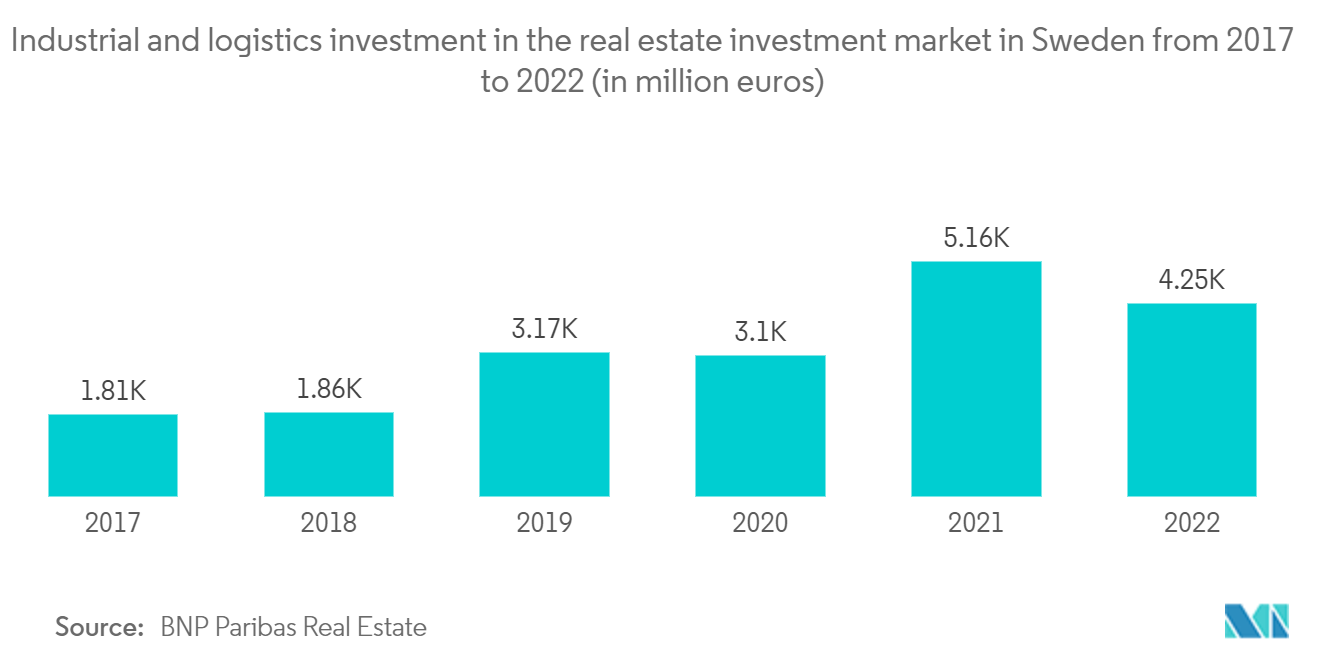
Rise in Construction Activities
- Compared to many other countries, the Swedish government adopted a relaxed attitude in responding to COVID-19 and opposed a strict lockdown. Public health authorities recommended people to self-isolate and take preventive measures, but the results of this strategy were costly in terms of health.
- The performance of the Swedish construction industry is better than its European counterparts, largely due to the country's less stringent lockdown measures. Although the impact of COVID-19 was relatively limited, the outlook for the Swedish construction industry remains negative. Before the current crisis, the industry was already weak due to the economic downturn. After the pandemic, the government is preparing to rapidly advance its infrastructure spending plans. Although downside risks remain, especially if the outbreak worsens, Sweden's construction industry may perform better than most European neighbors.
- Meanwhile, the Swedish people are choosing wooden prefabricated housing over conventional houses, as they are time and cost-consuming. In addition, wooden structures, tar-coated timber houses, low-cost solar-powered houses, etc., are gaining traction among the public. In Q3 2022, building permits for various types of residential dwellings were significantly reduced. For instance, in Q3 2022, building permits for the construction of multi-dwelling buildings, excluding service dwellings, amounted to more than 6,560, which declined by nearly 40% compared to the same period in 2021.
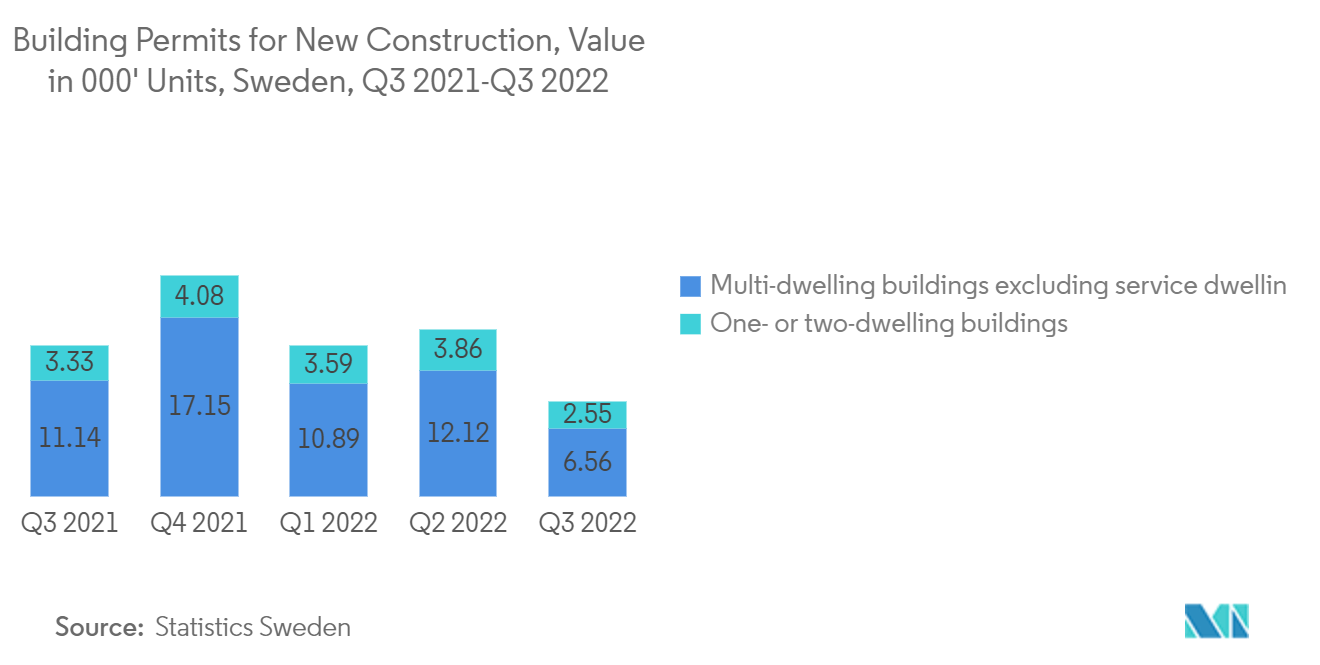
Competitive Landscape
Sweden's prefabricated housing market is highly competitive with none of the players occupying the major share. The market is fragmented, and it is expected to grow during the forecast period. Some suppliers are providing fully customized wooden prefabricated houses. Companies are implementing effective production technologies to minimize product costs and reduce related risks. Major players are Derome AB, Martinson Group AB, Lindbacks, and Trivselhus AB.
Sweden Prefabricated Housing Industry Leaders
Derome AB
Martinson Group AB
Lindbacks
Trivselhus AB
Gotenehus AB
- *Disclaimer: Major Players sorted in no particular order
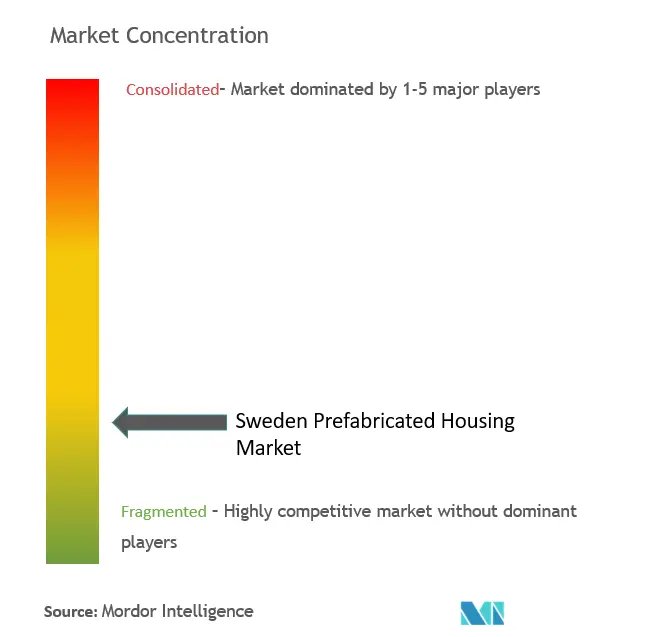
Recent Industry Developments
- November 2023: Algeco, Europe's foremost brand in modular and off-site building solutions, successfully secured a substantial order for state-of-the-art GRIDSERVE Electrical Forecourts®. The latest generation of Algeco modular buildings is playing a vital role in meeting the growing demand for GrisEnergy Electric Forecourts® across the nation.
- September 2023: The city of Malmö in southern Sweden welcomed Unity Malmö, a new student housing project consisting of five building blocks and 450 micro-living apartments. Forta PRO, in collaboration, delivered 269 modules, totaling 9,671.9 m2 for this innovative housing initiative.
Sweden Prefabricated Housing Market Report Scope
Prefabricated homes, often referred to as prefab homes, are primarily manufactured in advance offsite, then delivered and assembled on-site.
This report covers market insights, such as market dynamics, drivers, restraints, opportunities, technological innovation, its impact, Porter's five forces analysis, and the impact of COVID-19 on the market. In addition, the report provides company profiles to understand the competitive landscape of the market.
Sweden's prefabricated housing market is segmented by material and by sector. By material, the market is segmented by concrete, glass, metal, timber, and other materials types. By application, the market is segmented by residential, commercial, and other applications ( industrial, institutional, and infrastructure).
The report offers the market sizes and forecasts for Sweden's prefabricated housing market in value (USD) for all the above segments.
| Concrete |
| Glass |
| Metal |
| Timber |
| Other Material Types |
| Residential |
| Commercial |
| Other Applications ( Industrial, Institutional, and Infrastructure) |
| Material Type | Concrete |
| Glass | |
| Metal | |
| Timber | |
| Other Material Types | |
| Application | Residential |
| Commercial | |
| Other Applications ( Industrial, Institutional, and Infrastructure) |
Key Questions Answered in the Report
How big is the Sweden Prefabricated Housing Market?
The Sweden Prefabricated Housing Market size is expected to reach USD 4.28 billion in 2025 and grow at a CAGR of 7.01% to reach USD 6.01 billion by 2030.
What is the current Sweden Prefabricated Housing Market size?
In 2025, the Sweden Prefabricated Housing Market size is expected to reach USD 4.28 billion.
Who are the key players in Sweden Prefabricated Housing Market?
Derome AB, Martinson Group AB, Lindbacks, Trivselhus AB and Gotenehus AB are the major companies operating in the Sweden Prefabricated Housing Market.
What years does this Sweden Prefabricated Housing Market cover, and what was the market size in 2024?
In 2024, the Sweden Prefabricated Housing Market size was estimated at USD 3.98 billion. The report covers the Sweden Prefabricated Housing Market historical market size for years: 2020, 2021, 2022, 2023 and 2024. The report also forecasts the Sweden Prefabricated Housing Market size for years: 2025, 2026, 2027, 2028, 2029 and 2030.
Page last updated on:
Sweden Prefabricated Housing Market Report
Statistics for the 2025 Sweden Prefabricated Housing market share, size and revenue growth rate, created by Mordor Intelligence™ Industry Reports. Sweden Prefabricated Housing analysis includes a market forecast outlook for 2025 to 2030 and historical overview. Get a sample of this industry analysis as a free report PDF download.
